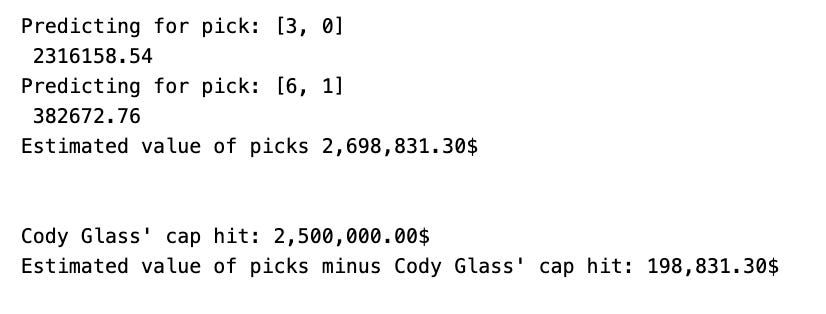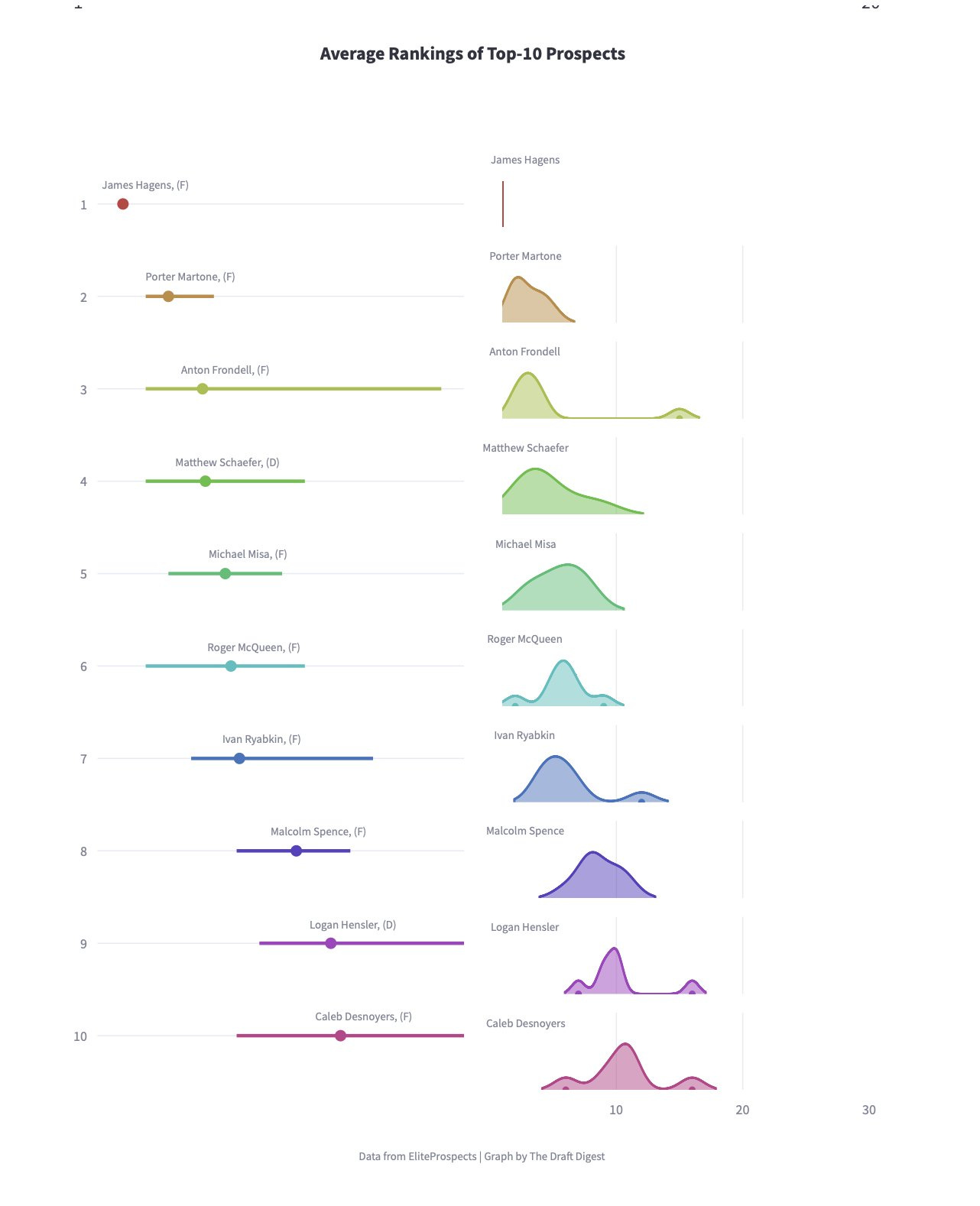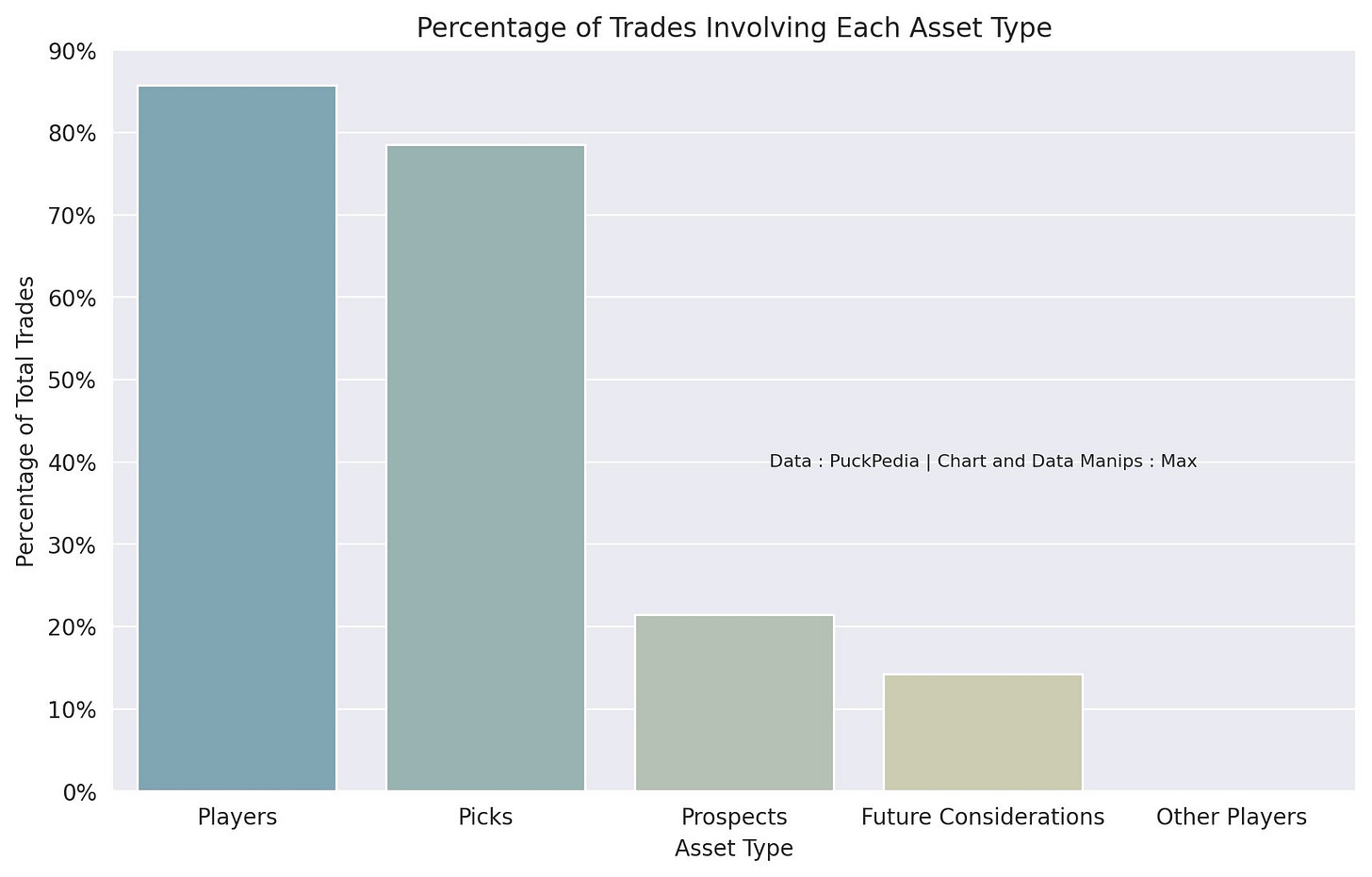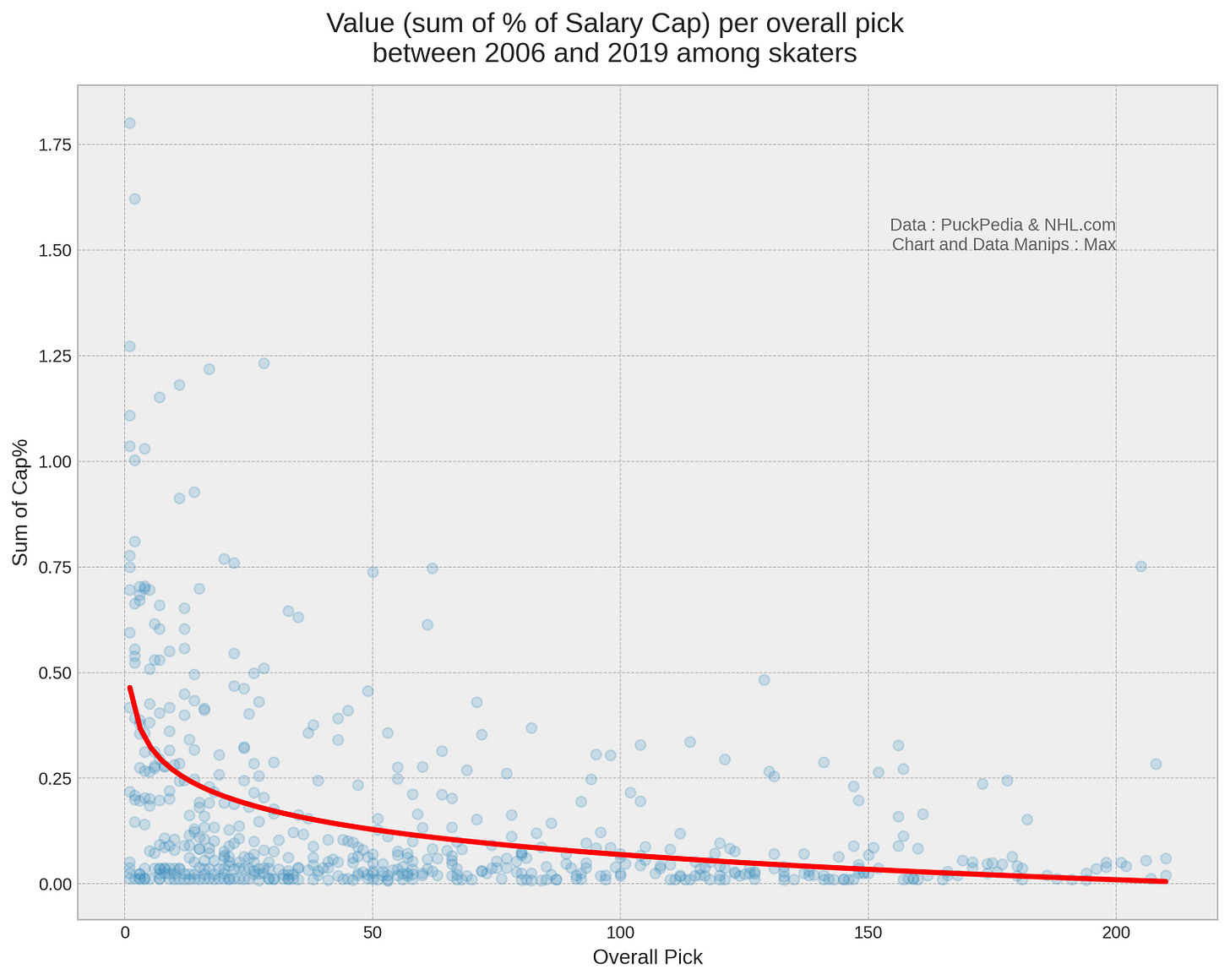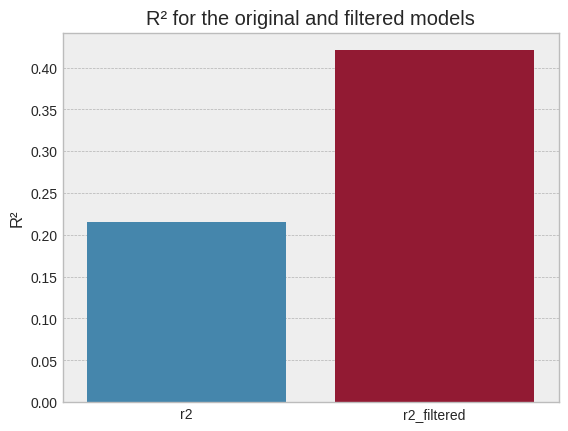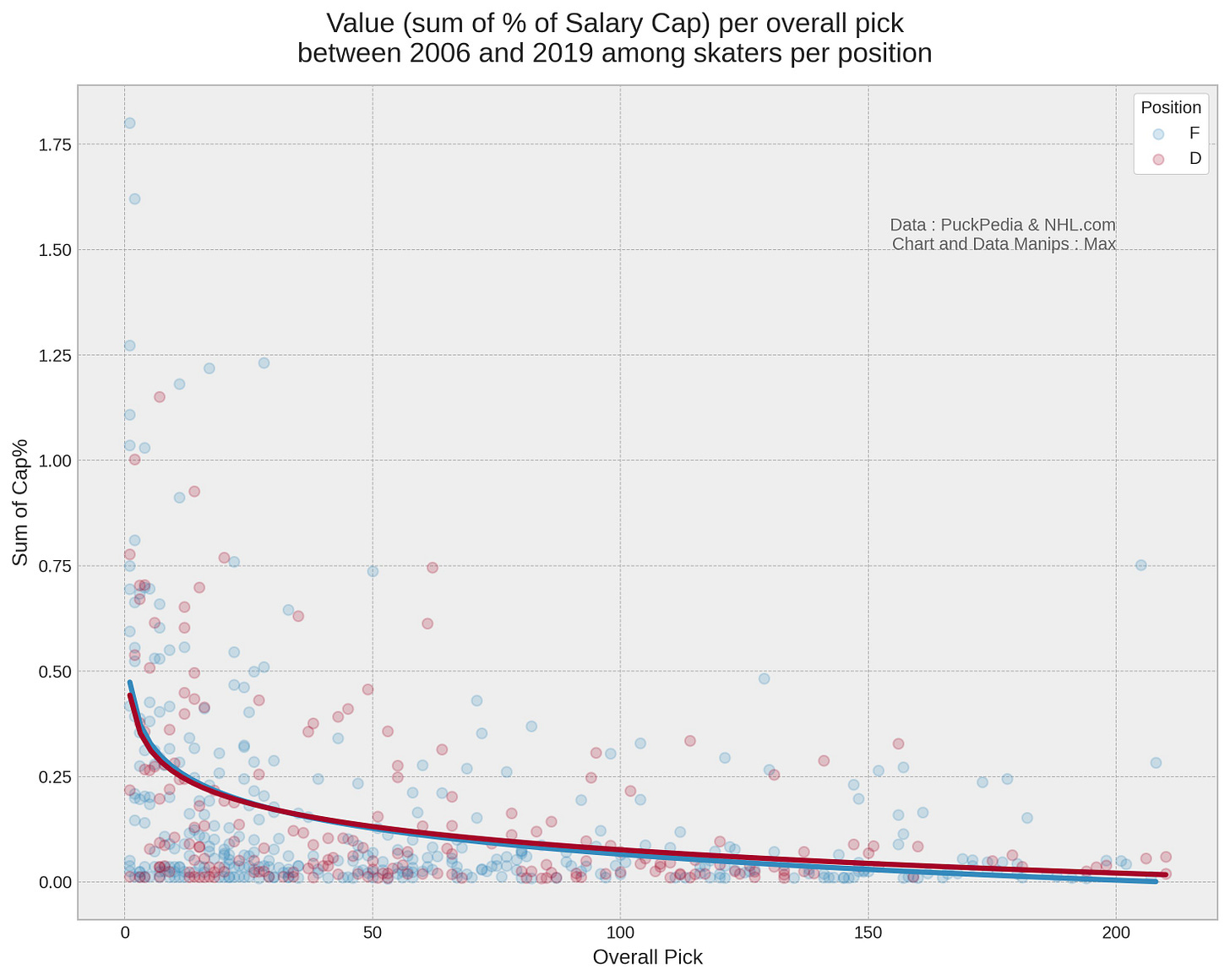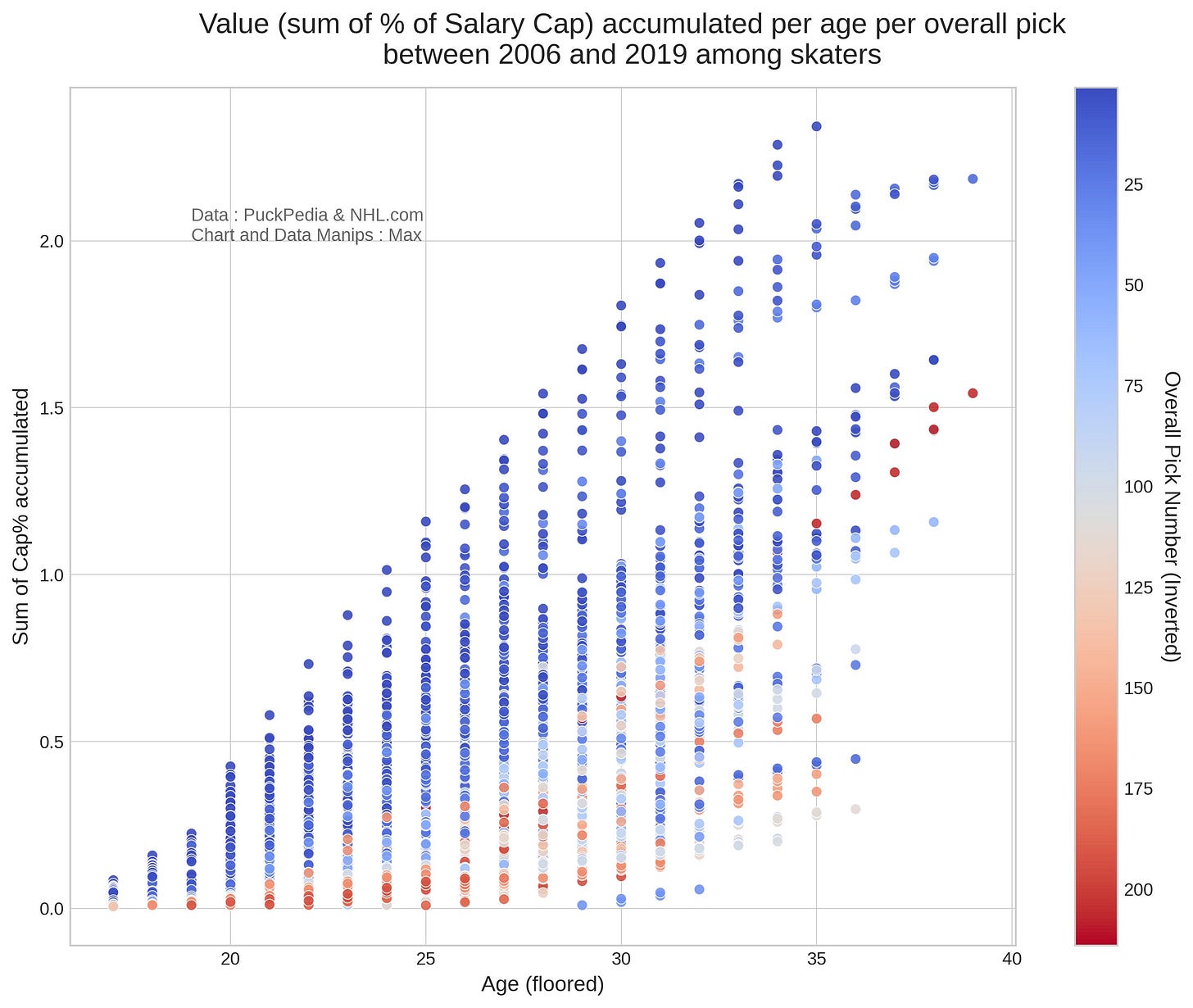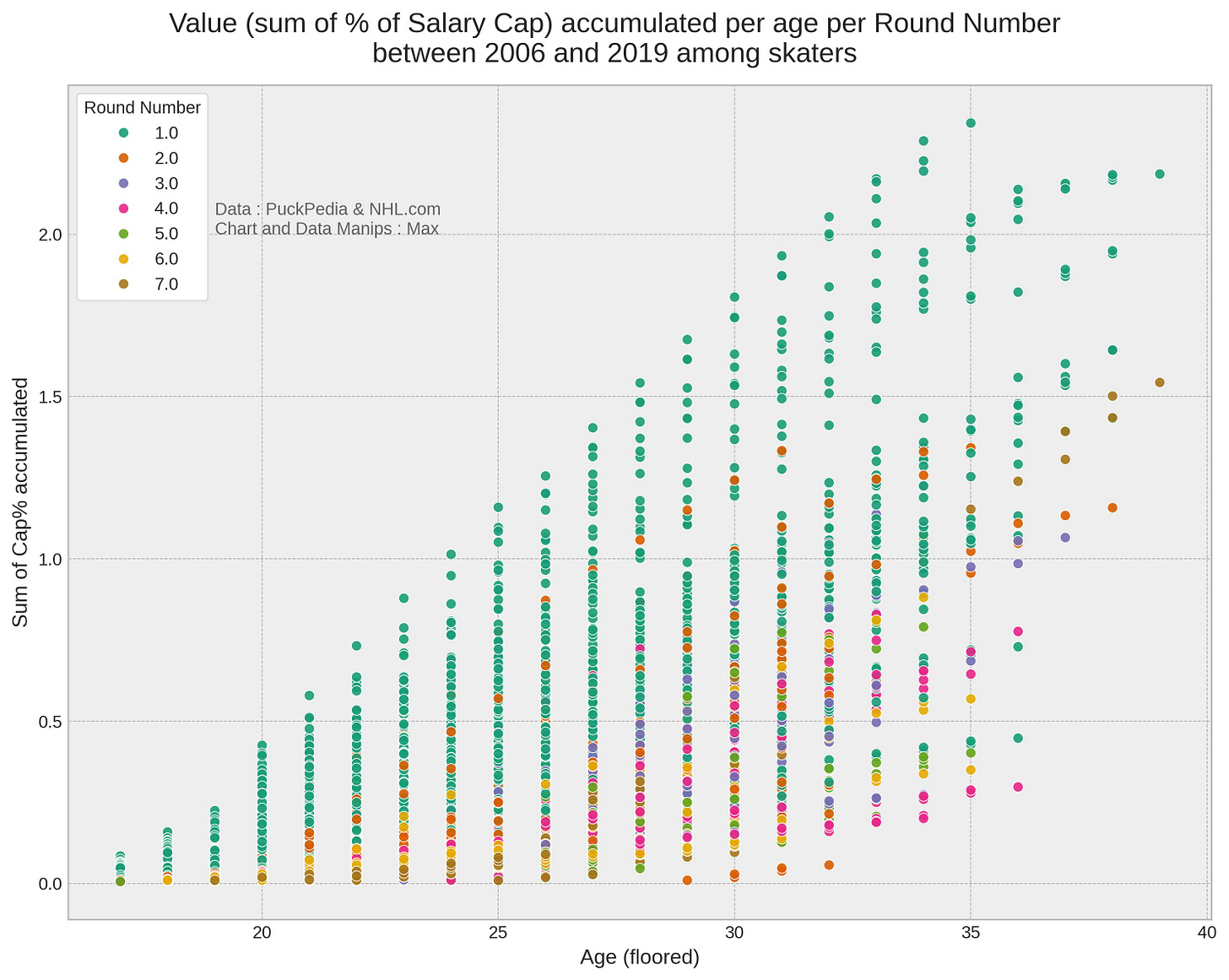What's the value of a Draft pick?
Mixing NHL Salary and Draft data
We have reached the first quarter of the NHL season, it is finally time to start talking about the NHL Draft. Instead of telling you about what top prospects your team will pass on next summer, I will try to find what conclusions I can draw from early exploratory data analysis of NHL Data and player salary data. For the upcoming weeks or months, I have teamed up with PuckPedia.com to do research about hockey. They are not paying me to say this, but feel free to use their website and follow them on socials because a lot of the work I will do in the future is not possible without their help.
NOTE : I have been writing this article for a week now. Some events in hockey happened since I started and I did not want to rewrite everything to account for things happening in real time, so just be aware of that.
Estimating the Value of a Draft pick has been a goal of mine for a long time. I once built a rudimental model to estimate the money retention based on the draft pick thrown in in the trade and despite how simple the model was, it worked really well. At the time, I had the value of a first-round pick at around $3.6M. So a team would need to add pay a 1st round pick to convince a team to retain $3.6M in salary for a player in a trade.
Even if I said I would not write about the headliners of the next Draft, I will still give you an idea of what is the current temperature among the public scouts. James Hagens seem to be the unanimous top prospect for now, followed by Porter Martone. Anton Frondell is the first European player on the list. Matthew Schaefer seem to be the unanimous top defenseman in the draft class. Sources told me to not be surprised if he moves inside the top-3 because he is a special player. The greatest name of the draft Roger McQueen is #6 and our top Russian player is Ivan Ryabkin. Quoi de mieux qu’un joueur québécois en Caleb Desnoyers pour compléter le top-10 du consensus! Major shoutout to EliteProspects.com for letting me use their data. You already know, I work with the best resources in hockey to provide you with some digestible hockey research.
Don’t ask me about the strength of the Draft. I can’t tell you right now. It is too early. I can still say that a generational talent is coming in 2026. 2025 is not the year your team will get the next Connor McDavid unfortunately. It is also way too early to run NHLe models, so I would advise being careful with some of the things you see online. I will try to have the first version of a variety of NHL Draft tools ready for New Years.
Assessing the value of a draft pick is an important task. Why? Because they are traded in almost all trades.
People who are smarter than me are doing a great job at building tools to assess NHL players. People who are smarter than me have also done a great job at finding the value of a pick, I can’t lie here. They also used much more sophisticated analysis than what I will show you today. But what I will show you here is simply a simple walkthrough of data exploration mixing NHL Salary and Draft Data.
Using the salary of an NHL Player is an intuitive way of evaluating players. It is fair to say “The better a player is, the higher his salary should be” as a general rule. It is flawed for multiple reasons, but for the sake of simplicity, let’s say this is true. The NHL has a hard salary cap (unless you are the Vegas Golden Knights apparently - jokes) and it is changing based on what the team’s owners decide (I think). So using the number value of salary is not the best way to see a player’s contract in a salary cap world because its real impact is actually the % of the salary cap the contract is taking. So from now on, these eyes will not be blinded by the lights we will use Cap% as variable instead of player average annual salary.
In finance, the value of a project is the sum of all the cashflows you will get out of it. So, in my simple analysis, I say that the value of a player is the sum of all Cap% he will make in his career. Where we compare that value with the overall pick a player was selected at, it gives an interesting graph. I found that using a logarithmic regression curve was good enough to fit the relationship.
Using R^2, we might think that there is no relationship, but if we remove “busts” (players that don’t become NHLers), the relationship between the cumulated Cap% and the draft rank becomes interesting. It is fair to assume that your top picks are going to be good regular contributors in the league and they should get paid a decent amount while you should not expect much from the later picks.
When we compare forwards and defensemen, we find 2 curves that are really similar, but Fs value is slightly higher in the first round.
When we add the age in the analysis, things get really interesting : it confirms the obvious a fact that the highest-paid players are generally the players who get drafted earlier.
If the previous chart was not easy to read, I made one using Round Pick number as colour variable. Again, we find out that players drafted earlier are making more money than players drafted later.
To conclude, I want you to leave the reading with 3 concepts :
It is really important to assess the value of picks because picks are involved in most hockey trades. If you want to make a trade (because you are a hockey team) or you want to assess a trade (because you are a media or a fan or just yourself), you NEED to find a way to evaluate for the value of a pick.
A Logarithmic Regression fits the relationship between a pick and its value really well and it is simple to understand. In good English, as we go further in the draft, the difference of value between a pick and the following pick keeps getting smaller.
This one will be a game changer in hockey : the players selected higher are generally more likely to make more money in their career, unless their name is Joe Pavelski.
I think it is also important to remember we are dealing with human beings when we talk about prospects. It is often easy to talk about them like they are just a playerId in our database, but even I, often forget that the players I am writing about are people that have their own feelings and their job is consistently monitored by the public that does not hesitate to tell them when they are bad at their job (sometimes wrongly). I will use that small break to wish a great season to all the players, to the personnel on teams, to media contributors (who work like their life depends on it to create content for the growing fanbase), and most importantly to my old friends at La Victoire de Montréal. I wish you a lot of Victoires and I hope to catch one of your games this season! This is the moment you find out my title was clickbait because I did not tell you what was the exact value of a draft pick. This article is the appetizer of a whole meal. This is the first taste of a series of articles where we explore fields that did not have much attention from the public sphere. It is also a learning journey for me.
Let’s cook 🧑🍳!


